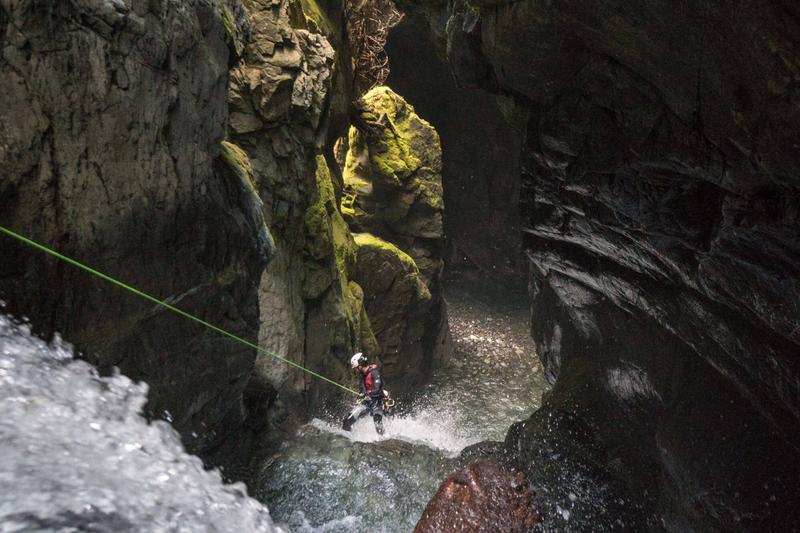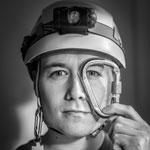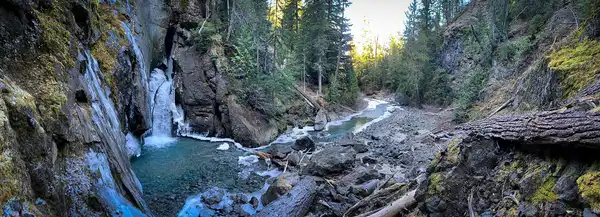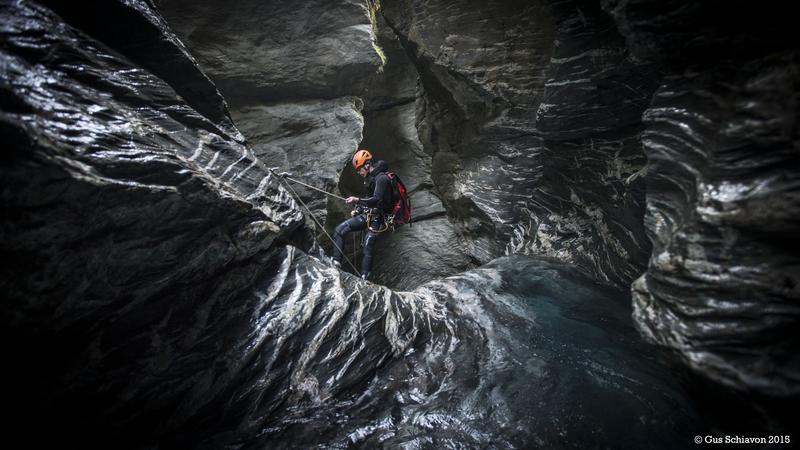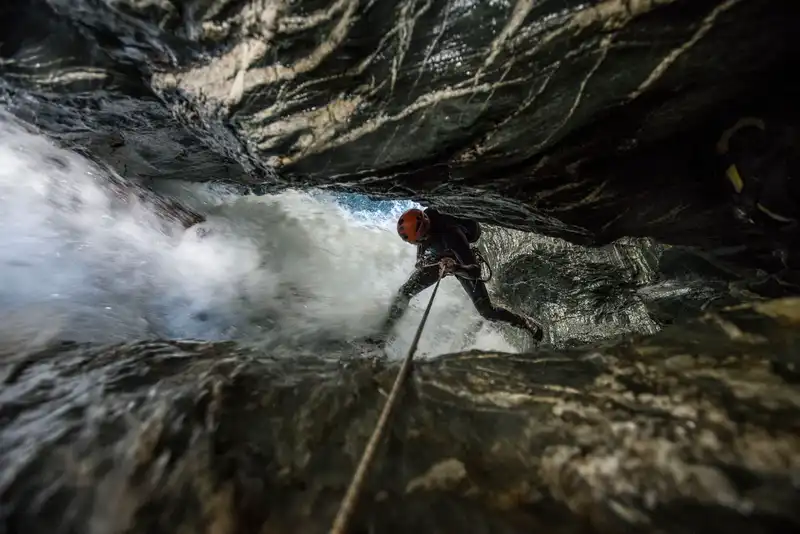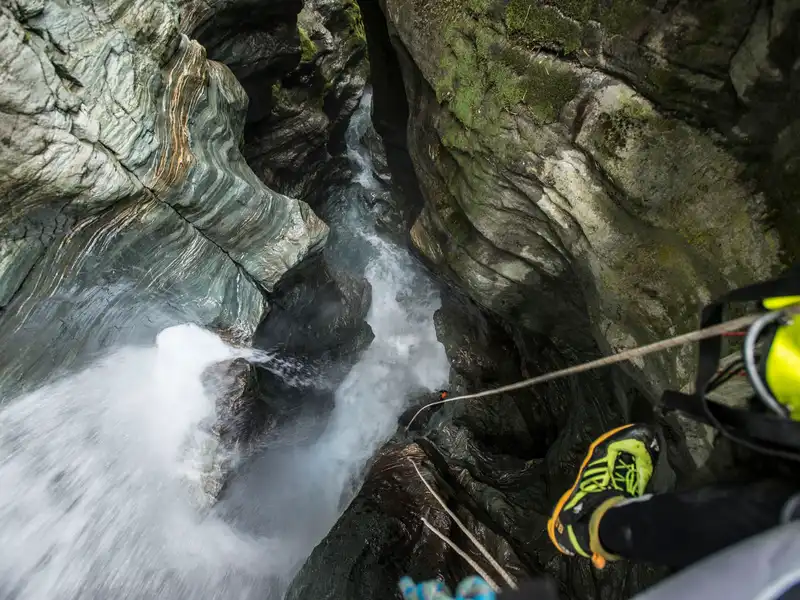We could see the spray from the falls before we saw the falls itself, the roar of the water growing as we rounded the last bend in the river. There were four of us, having spent the past four hours hiking on old trails, pushing through swampy meadows, and walking through the chilly North Fork Tieton River itself when the brush was too dense to walk along the banks.
One member of our team, Ryan, had seen a hazy photo of this waterfall shared on social media that looked like it might have canyon potential above it. Looking at Google Earth and topo maps can only tell you so much. The crème de la crème of canyons, the deep, dark, narrow slot canyons, are often impossible to detect unless you are there to see them for yourself. You are always hopeful that a canyon might be hiding there, but you never let your hopes get too high.
Our final turn around the bend revealed a beautiful, turquoise blue waterfall pouring out of a vertical gash in the hillside, the dark chasm above like the menacing mouth of a giant. I’ll never forget that moment as all four of us we whooped and hollered with excitement at what we had just found. We immediately knew that it was going to be something special. I knew there were canyons in the Pacific Northwest when I moved back to Portland from Los Angeles in 2015, but I had no idea that so much more potential for further exploration existed. Having initially cut my teeth running canyons in the American southwest, known primarily for its dry(ish) sandstone slot canyons, I was amazed by what was hiding in my own backyard, sometimes in what seemed like plain sight.
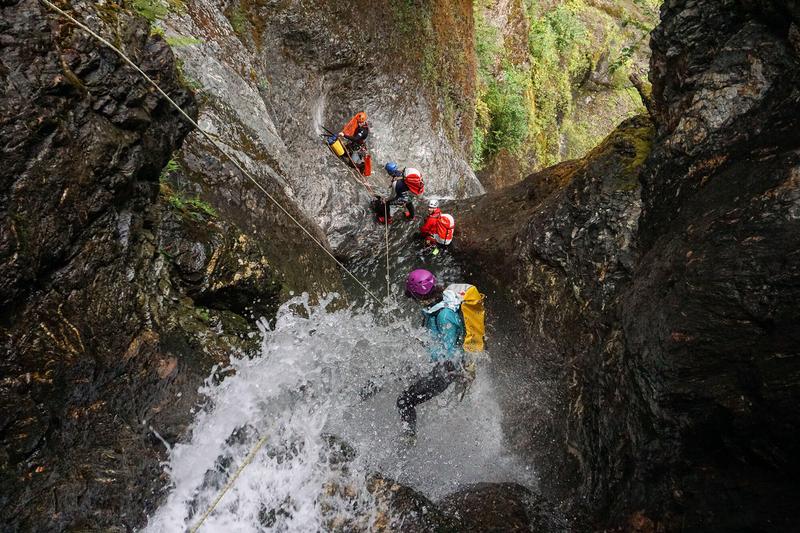
Canyoning in the Pacific Northwest
The Pacific Northwest is a mossy, green, flowing water wonderland that includes Oregon, Washington, Idaho, and British Columbia. The Cascade Range is the primary mountain range in the region, running from the top of California all the way up into British Columbia. The diverse geology and subregions also provide great canyon variety, from deep and narrow slot canyons to more open streams with long rappels in steep terrain.
Canyoning as an activity in the Pacific Northwest is still in its infancy. The earliest documented canyon descents were in the late 1990’s and early 2000’s, with occasional routes being explored until around the mid 2010’s. In the past five years, the number of documented canyons in the region has nearly doubled. While there are only a handful of known canyoneers actively descending new canyons, they tend to be passionate people who spend much of their summer (and winter) free time out exploring new routes.

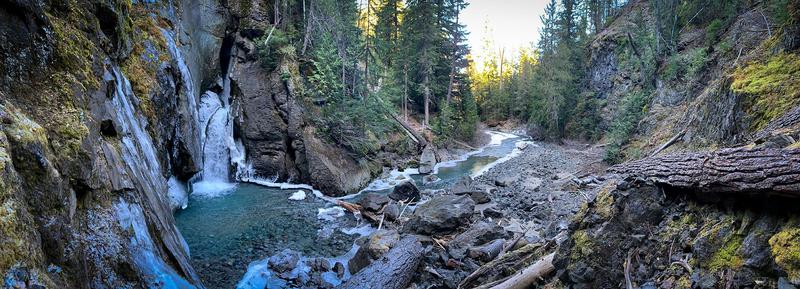
After a season working as a canyoning guide in New Zealand, I moved to Seattle to focus on finding new canyons in central and northern Washington. I’ve been fortunate to be a part of almost 30 first descents in the Northwest, while teammates Ryan Ernst & Haruka-James Clay Lipscomb from Portland have at least double that or more (when asked for numbers they just said they’ve lost count). Canyon exploration wouldn’t be what it is without a solid, passionate group of individuals with a variety of skillsets. Our first descent team is typically a core group of 6-8 people from the Portland and Seattle areas. The group is constantly sharing Google Earth images and drone footage of potential routes that catch our eye, which then get added to a long list of prospects that continues to grow faster than we can explore them. Trips are typically organized through Facebook, sometimes weeks or months in advance for more serious objectives. Full beta usually then gets published online so the rest of the community can enjoy them as well.
Wellman Basin Canyon
One of our favorite first descents of 2019 was Wellman Basin, a route off the North Fork Stillaguamish River in Washington. The canyon is beautiful and deep, though not especially narrow, and dense snow drifts from winter avalanches often cover the canyon floor until late summer. In 2018, we endured a torturous, three hour uphill bushwack through vine maples and devil’s club (yes, it’s as bad as it sounds) to run this canyon. Unfortunately, we ended up making the call to turn back due to weather and lack of time. With our tails between our legs, we battled our way back down the same route we came. Disappointment like this only lights a fire to come back and conquer once and for all. One year later, we did just that, coming back strong and finally ticking the canyon off the list.
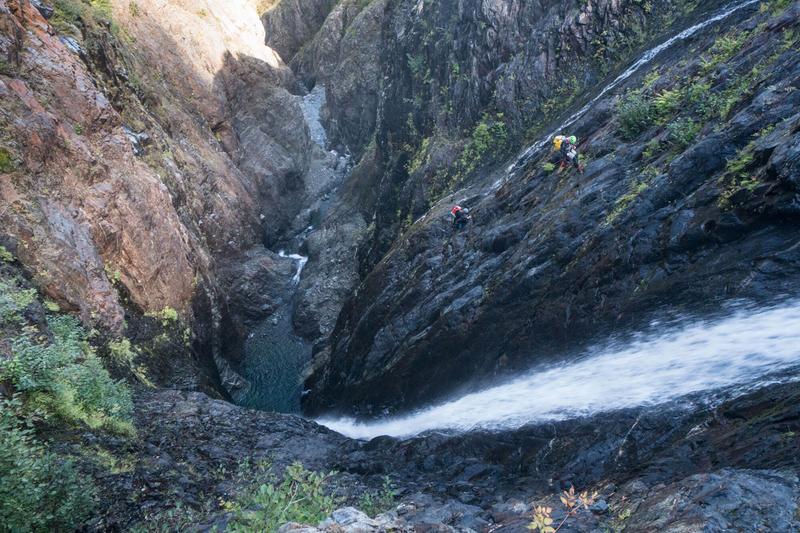
While it is possible to run canyons year round, the optimum window is June through September. More established canyons mean more options for canyoneers with different experience levels, as well as more interest from people looking to learn the sport. A few companies have begun offering annual training courses in the Portland and Seattle areas, filling a need for local training with a focus on aquatic canyoning techniques. There is even a local company called NÖR HEX in Portland making custom canyon backpacks and rope bags.
The PNW Canyoning Community
The recreational community here is small but growing rapidly, and it’s been very encouraging to see the increased interest over the past few years in the beautiful canyons we have here. The North Cascades in particular hold some of the greatest potential in the Pacific Northwest. Many canyons remain unseen or undescended due to how remote they are, as well as having a very limited window to run them each year. One such canyon is Crystal Creek, a deep and narrow slot canyon brought to our attention by our team regular, Kevin Steffa. In 2019, we made the long hike in and attempted to run the lower narrows but had to back out due to lack of time. We camped with the plan to try again the next day, but as luck would have it, the only thunderstorm of the year decided to crash our party that night.
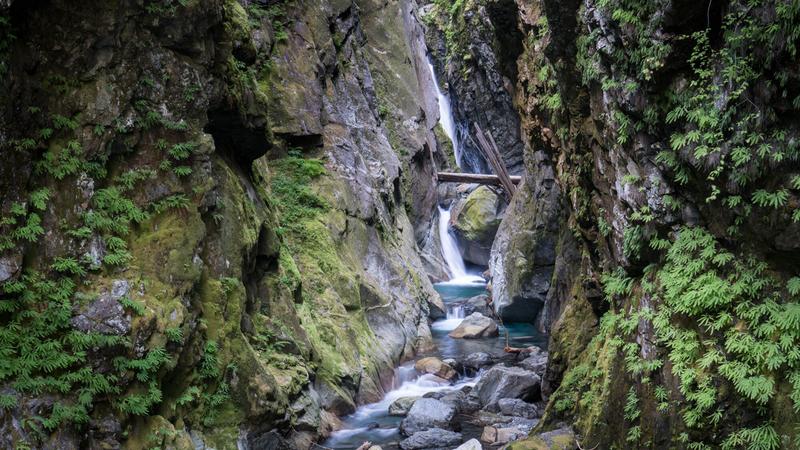
With three of us hunkered down underneath a pop shelter, lightning flashed and thunder echoed up and down the valley, getting louder and closer each time. “Are we okay where we are?” whispered Tiffanie, scrunched up next to me in her sleeping bag. “Oh yeah, we’re totally fine,” I replied, only 94% sure of it myself. The next morning, the storm had passed, and the water levels at the base of Crystal had risen noticeably. Our fears were confirmed, Crystal would have to wait. Disappointment aside, we were happy to have gotten a glimpse at this mysterious canyon. No doubt she’ll still be there waiting for us, holding on to her secrets until she’s ready to give them up.
We have barely scratched the surface of the canyon potential here in the Pacific Northwest, and even now canyons are being found near popular roads and trails that had previously gone unnoticed or had simply not been descended until now. The potential for quality canyons hiding both on and off the beaten path is very high, and our passion for finding these hidden places is as strong as ever. We are sure to continue finding more of these incredible canyons for years to come.

